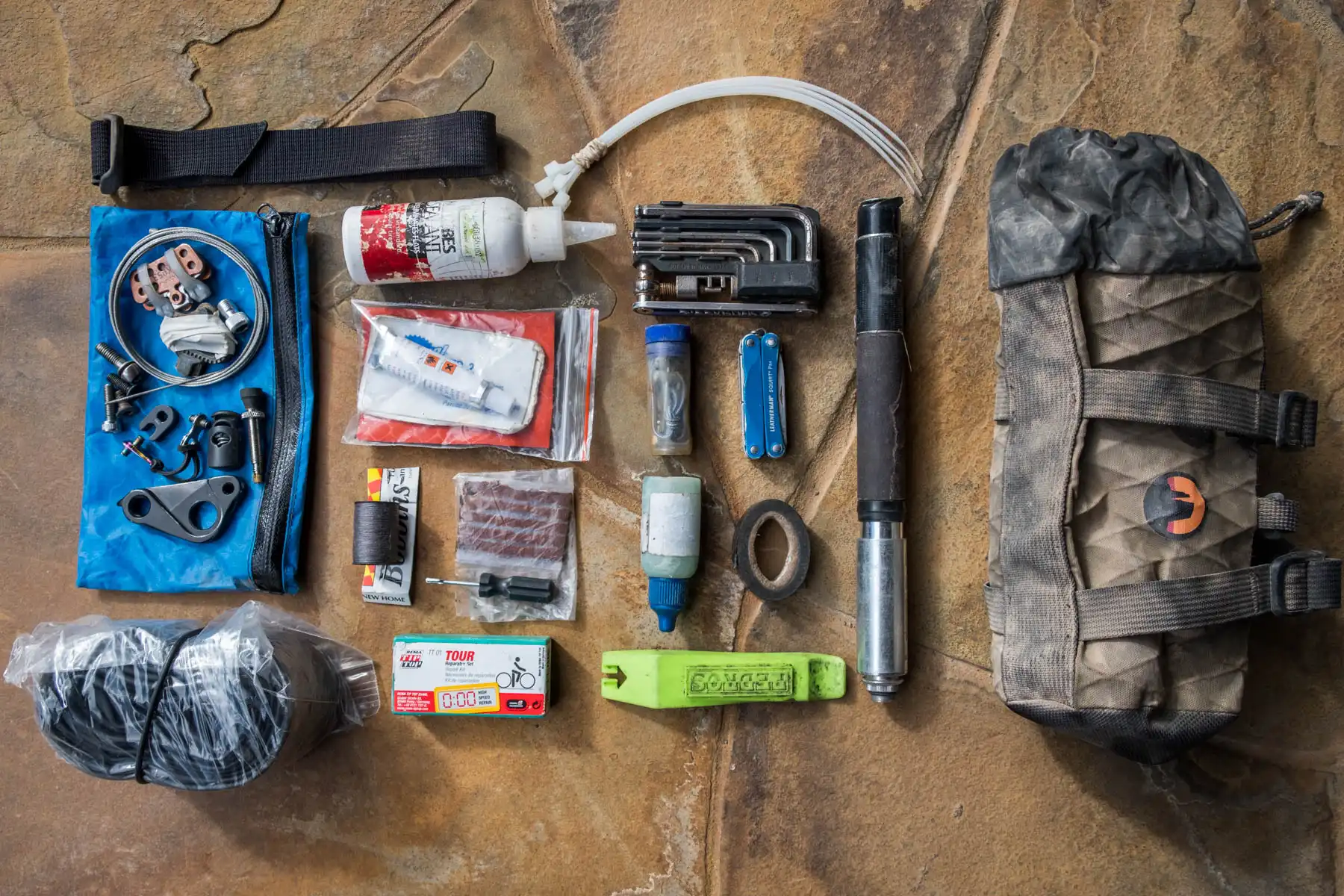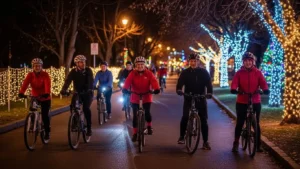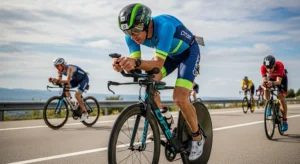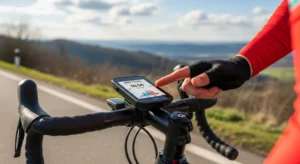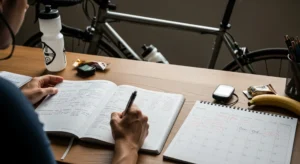Whether you’re a beginner cyclist or a seasoned rider, having the right gear can make all the difference in your cycling experience. From comfort to safety, the gear you choose plays a critical role in ensuring your rides are enjoyable and efficient. But with so many options on the market, it can be overwhelming to know what you really need. In this guide, we’ll walk you through the essential cycling gear you need to get started—and what’s nice to have for those looking to enhance their riding experience.
1. A High-Quality Bike
The most obvious piece of cycling gear is, of course, your bike. Choosing the right bike depends on the type of riding you plan to do. Whether you’re commuting, mountain biking, or road racing, you’ll need a bike suited for your specific needs.
-
Road Bikes: Built for speed and efficiency on paved roads, road bikes are lightweight and have drop handlebars for an aerodynamic riding position.
-
Mountain Bikes: Designed for off-road trails, mountain bikes feature rugged tires, suspension forks, and wider tires to absorb impacts from rough terrain.
-
Hybrid Bikes: A mix of road and mountain bikes, hybrids offer comfort and versatility for casual riders and commuters.
Before buying, test ride several bikes to ensure the size and fit are right for you.
2. Helmet: Your Most Important Safety Gear
A helmet is absolutely essential. It is your first line of defense against head injuries in case of an accident. Ensure your helmet fits properly—too loose and it won’t provide adequate protection, too tight and it will cause discomfort.
What to look for in a helmet:
-
Fit: Make sure the helmet fits snugly around your head and doesn’t move when you shake it.
-
Ventilation: A well-ventilated helmet will keep your head cool during long rides.
-
Certification: Always buy a helmet that meets safety standards such as CPSC (Consumer Product Safety Commission) for U.S. riders.
3. Cycling Shoes and Pedals
Cycling shoes might not seem essential for beginners, but they can make a huge difference in your efficiency and comfort. Cycling shoes are designed to work with clipless pedals, which allow you to “clip” your shoes into the pedals for more efficient power transfer.
-
Clipless Pedals: These pedals have a mechanism that attaches to special shoes with cleats. When you pedal, you’re not just pushing down but also pulling up, which increases pedaling efficiency.
-
Flat Pedals: If you’re just starting out, flat pedals work perfectly fine. They allow for easy foot placement and are ideal for casual riders.
4. Cycling Shorts
One of the key pieces of gear that many new cyclists overlook is a good pair of cycling shorts. While they may seem like an unnecessary investment, cycling shorts can greatly improve comfort on long rides by preventing chafing and reducing saddle sores.
Why you need cycling shorts:
-
Padding (Chamois): Most cycling shorts have a built-in chamois that cushions your sit bones and reduces friction.
-
Moisture-Wicking Fabric: These shorts are made from materials that wick away sweat, helping you stay dry and comfortable during long rides.
-
Fit: Cycling shorts are form-fitting, which reduces air resistance and helps with aerodynamics.
5. Cycling Gloves
A good pair of cycling gloves is often overlooked, but they’re essential for comfort and protection. They provide cushioning for your hands and reduce vibration from the handlebars, which can lead to hand numbness or discomfort over long rides.
Benefits of cycling gloves:
-
Grip: Gloves provide better grip, especially in wet conditions.
-
Protection: In case of a fall, gloves help protect your hands from abrasions and bruises.
-
Comfort: Padded gloves reduce pressure on your hands and wrists, especially on long rides.
6. Water Bottle and Cage
Staying hydrated during your ride is crucial for maintaining energy and avoiding dehydration. A water bottle is a must-have for every cyclist, and a bottle cage attached to your bike ensures you can easily access your drink while riding.
Tips for choosing the right bottle and cage:
-
Bottle Size: Choose a bottle that fits comfortably in your cage, usually between 500ml to 1 liter.
-
Material: Bottles made of BPA-free plastic or stainless steel are durable and safe.
-
Cage Position: Ensure the cage is mounted where it’s easy to reach while cycling, typically on the frame near the down tube.
7. Lights and Reflective Gear
Cycling at night or in low-visibility conditions requires extra safety measures. Bike lights and reflective gear are essential for making sure you’re visible to other road users.
-
Front Lights: A bright front light is crucial for seeing the road ahead and being seen by others.
-
Rear Lights: A red rear light makes you visible to drivers behind you.
-
Reflective Gear: Reflective vests, straps, or stickers on your bike increase visibility in dark conditions.
8. Bike Lock
If you plan to leave your bike unattended, investing in a good bike lock is essential. A bike lock will help prevent theft and give you peace of mind when parking your bike in public spaces.
Types of bike locks:
-
U-Locks: Known for being highly secure, U-locks are resistant to most thieves’ tools.
-
Chain Locks: Flexible and often easier to secure, but can be heavier and less secure than U-locks.
-
Folding Locks: A combination of flexibility and security, folding locks are compact but still provide good protection.
9. Cycling Jacket or Outerwear
Weather conditions can change quickly, so it’s important to have a cycling jacket or outerwear to protect you from wind, rain, or cold temperatures. Look for jackets that are lightweight, breathable, and packable for easy storage.
What to look for:
-
Water Resistance: A good cycling jacket should be able to protect you from light rain.
-
Breathability: Look for jackets with ventilation to help regulate body temperature.
-
Visibility: Opt for jackets with reflective materials if you plan to ride at night.
10. Multi-Tool and Repair Kit
Punctures, loose bolts, and other mechanical issues can arise while out on a ride. A multi-tool and basic repair kit can help you address minor issues and continue your ride without needing a professional mechanic.
Essentials to carry:
-
Tire Levers: Used for removing the tire from the wheel if you get a flat.
-
Spare Tube: Always carry a spare tube in case of a puncture.
-
Mini Pump: A compact pump to inflate a flat tire quickly.
-
Multi-Tool: A tool with several functions, including a wrench, screwdriver, and chain tool.
Conclusion: Gear Up and Ride
Cycling gear doesn’t have to be complicated. By focusing on the essentials—like a helmet, proper clothing, and a well-maintained bike—you can ensure a safe, comfortable, and enjoyable cycling experience. As you progress, consider adding more specialized gear like clipless pedals, a repair kit, or weatherproof clothing to suit your needs. The right gear will help you ride more efficiently, stay safe, and get the most out of your cycling adventures. Happy riding!
